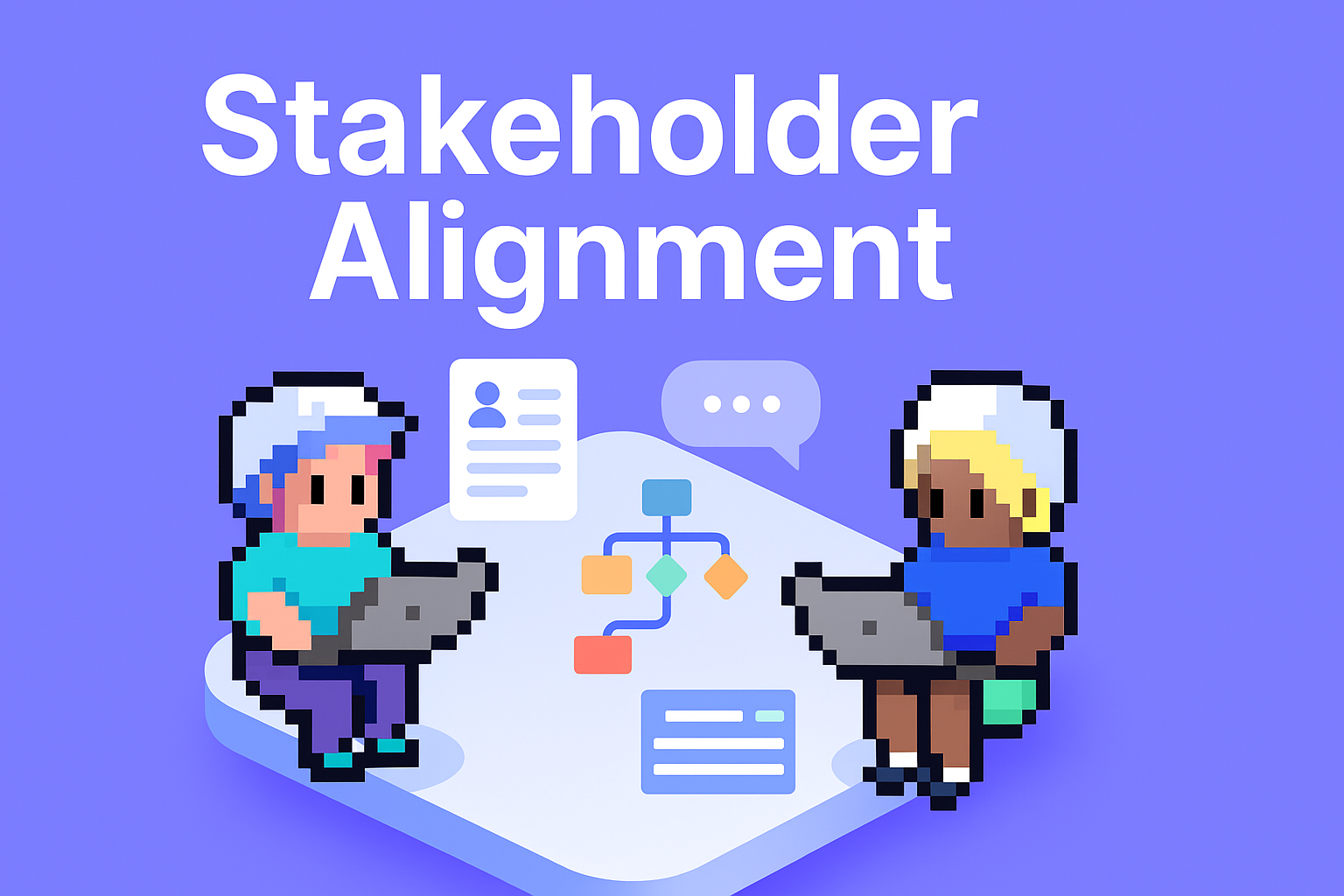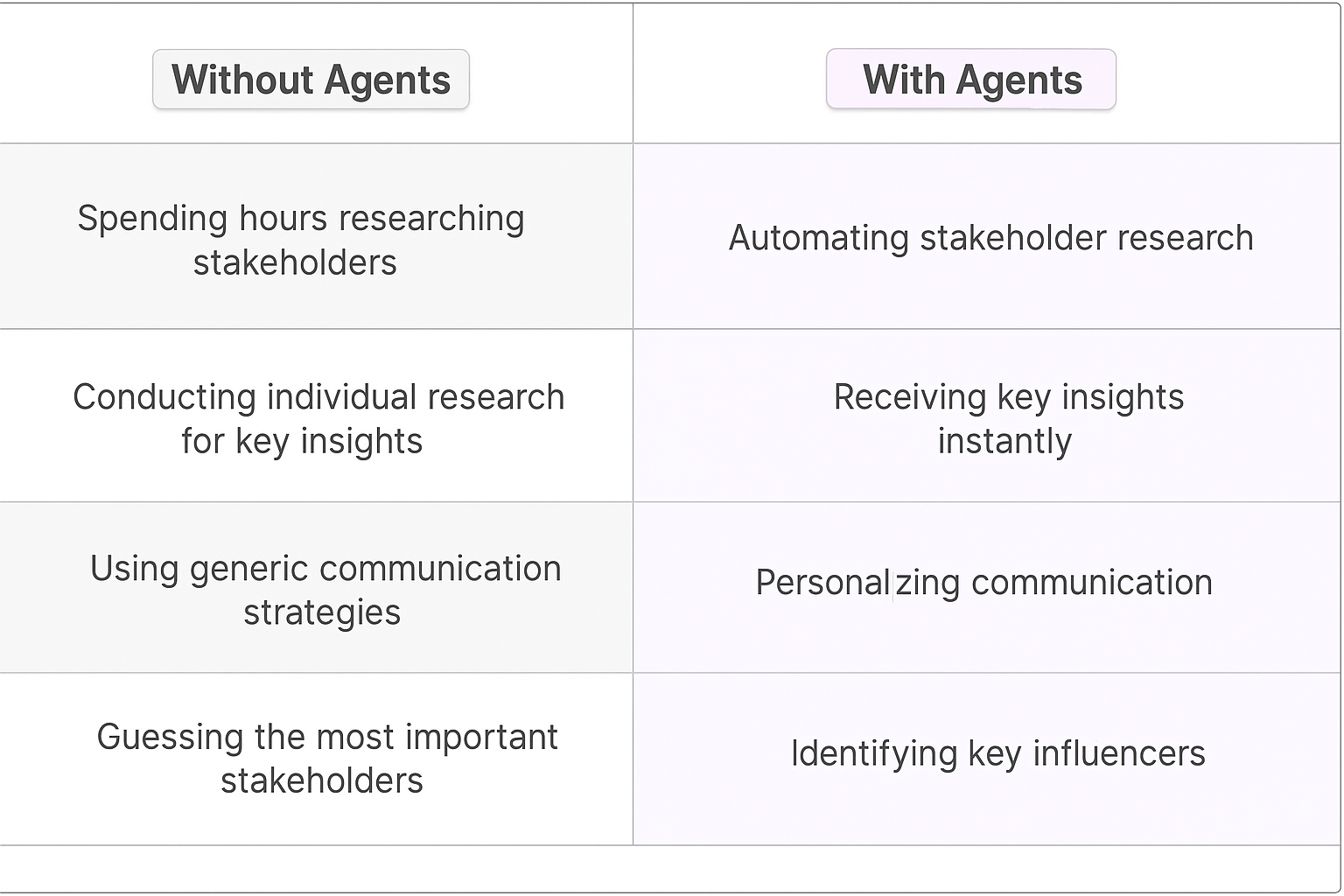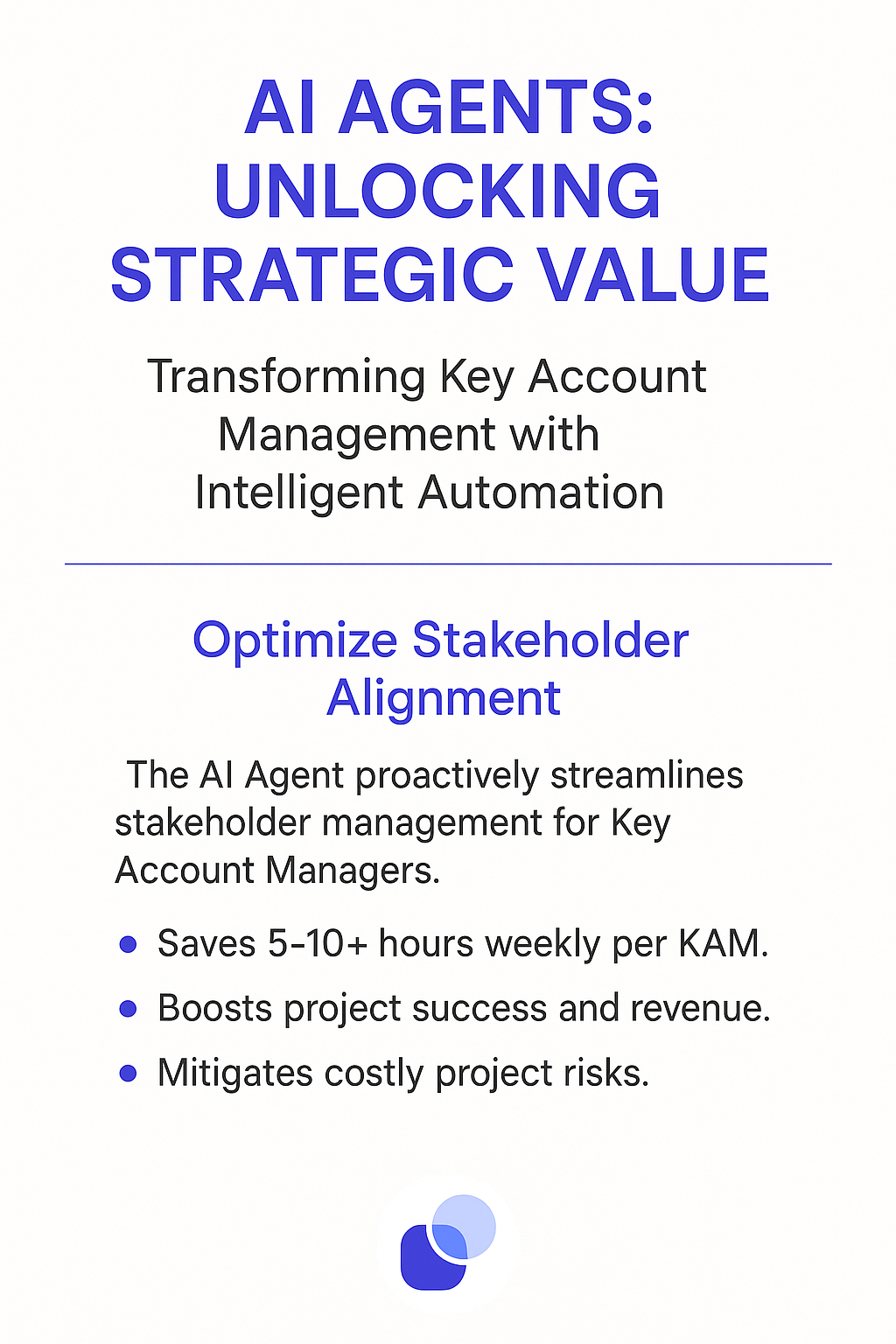
AI-powered meeting planner agents are revolutionizing how key account managers manage stakeholder alignment, coordinate with diverse teams, and optimize their time. These agents automate the tedious aspects of stakeholder communication, from analyzing profiles to generating personalized strategies, allowing managers to focus on building strong relationships and driving successful project outcomes. This technology streamlines workflows, reduces conflicts, and enhances overall client satisfaction.
Before Meeting
Your AI agent analyzes stakeholder profiles, identifies potential points of conflict, and prepares personalized talking points for each participant. You walk into the meeting with a clear understanding of each stakeholder's priorities and concerns.
During Meeting
As stakeholders share their perspectives, your AI agent identifies areas of agreement and disagreement, suggests compromise solutions, and tracks action items. This keeps the meeting focused and productive.
After Meeting
Post-meeting, your AI agent generates a summary of key decisions, assigns responsibilities, and monitors progress. This ensures that everyone stays accountable and that the project remains on track.
What you’ll need
You don't need to be a developer to set up this integration. Follow this simple guide to get started:
- Meeting Notetaker Agent template
- Calendar account
- Meetings to join
- Relevance AI Account

Who this agent is for
This agent is designed for key account managers, client relationship managers, project managers, and anyone responsible for aligning stakeholders within client organizations. It's ideal for individuals and teams who frequently conduct meetings with multiple decision-makers, department heads, and external partners. Whether you're managing a single large account or multiple smaller accounts, this agent simplifies stakeholder alignment and ensures everyone is working towards the same goals.
How this agent makes stakeholder alignment easier
Analyze stakeholder profiles and identify potential conflicts
Instead of manually researching each stakeholder, the agent automatically analyzes their profiles, identifies their priorities, and flags potential areas of conflict. This saves significant time and allows you to prepare for the meeting more effectively.
Generate personalized communication strategies
The agent generates personalized communication strategies for each stakeholder, tailoring your message to their specific needs and concerns. This increases the likelihood of a positive outcome and strengthens your relationships.
Map decision-making processes and identify key influencers
The agent maps the decision-making processes within the client organization, identifying key influencers and decision-makers. This allows you to focus your efforts on the individuals who have the most impact on the project.
Create alignment frameworks and ensure everyone understands their roles
The agent creates alignment frameworks that clearly define each stakeholder's roles, responsibilities, and the path forward. This reduces confusion and ensures everyone is working towards the same goals.
Benefits of AI Agents for Key Account Managers
What would have been used before AI Agents?
Key account managers traditionally relied on manual methods, such as individual research, phone calls, and email threads, to align stakeholders. This process was time-consuming, prone to errors, and often resulted in miscommunication and conflicts. They would spend valuable time gathering information, preparing presentations, and facilitating meetings, taking away from their core responsibilities of building relationships and driving revenue.
What are the benefits of AI Agents?
AI agents offer a streamlined and automated approach to stakeholder alignment, freeing up key account managers to focus on more strategic tasks. The most significant benefit is the time saved by automating the analysis of stakeholder profiles and the generation of personalized communication strategies. The agent handles everything from identifying potential conflicts to creating alignment frameworks, reducing the administrative burden on the manager.
AI agents also minimize miscommunication by ensuring that everyone is on the same page regarding project goals and responsibilities. This reduces the likelihood of conflicts and improves overall project outcomes. Furthermore, the agent improves communication by providing personalized talking points and facilitating productive discussions.
By integrating with existing CRM systems and project management tools, the agent provides a seamless and user-friendly experience. This eliminates the need for manual data entry and ensures that all stakeholder information is accurately recorded and easily accessible. Ultimately, AI agents enhance productivity, reduce stress, and allow key account managers to focus on building strong relationships and driving successful project outcomes.
Traditional vs Agentic meeting planning
Traditionally, key account managers spent hours each week manually researching stakeholders and preparing for alignment meetings. Now, AI agents automate this, freeing up time for relationship building. Before, understanding each stakeholder's priorities involved extensive individual research. With an agent, key insights are provided instantly, based on data analysis. Communication strategies used to be generic and one-size-fits-all. Now, they're personalized, increasing engagement. Identifying key influencers was a guessing game. The agent maps decision-making processes, revealing the most important stakeholders. Finally, ensuring everyone was aligned required constant follow-up. The agent creates clear frameworks, keeping everyone on track.

Tasks that can be completed by a Stakeholder Alignment Agent
Key account managers juggle numerous tasks, from building relationships with clients to managing projects and driving revenue growth. A stakeholder alignment agent can handle many of the administrative tasks associated with coordinating and facilitating alignment meetings, allowing managers to focus on their core responsibilities.
Analyzing Stakeholder Profiles
The agent analyzes the profiles of all stakeholders, identifying their priorities, concerns, and potential areas of conflict.
Generating Personalized Communication Strategies
The agent generates personalized communication strategies for each stakeholder, tailoring your message to their specific needs and concerns.
Mapping Decision-Making Processes
The agent maps the decision-making processes within the client organization, identifying key influencers and decision-makers.
Creating Alignment Frameworks
The agent creates alignment frameworks that clearly define each stakeholder's roles, responsibilities, and the path forward.
Facilitating Productive Discussions
The agent facilitates productive discussions during alignment meetings, ensuring that everyone has a chance to share their perspectives and that all concerns are addressed.
Tracking Action Items and Responsibilities
The agent tracks action items and responsibilities, ensuring that everyone is accountable for their commitments.
Generating Meeting Summaries and Follow-Up Emails
The agent generates meeting summaries and follow-up emails, keeping everyone informed of key decisions and action items.
Integrating with CRM Systems and Project Management Tools
The agent integrates with CRM systems and project management tools, providing a seamless and user-friendly experience.

Things to Keep in Mind When Building a Stakeholder Alignment Agent
Building an effective stakeholder alignment agent requires careful planning and attention to detail. The goal is to create an agent that seamlessly integrates with your existing workflows and provides a user-friendly experience for all participants.
Define Clear Objectives
Before you start building your agent, define clear objectives for what you want it to achieve. Do you want to reduce conflicts, improve communication, increase alignment, or all of the above? Having clear objectives will help you prioritize features and measure success.
Integrate with Existing CRM Systems and Project Management Tools
Ensure that your agent integrates seamlessly with popular CRM systems and project management tools. This will make it easier for users to adopt the agent and incorporate it into their daily routines.
Prioritize User Experience
Make sure that the agent is easy to use and intuitive. The interface should be clean and uncluttered, and the alignment process should be straightforward and efficient.
Automate Communication and Follow-Up
Configure the agent to automate communication and follow-up, sending personalized emails and reminders to keep stakeholders informed and engaged. This will help reduce miscommunication and ensure that everyone is aware of their responsibilities.
Handle Sensitive Information Securely
Ensure that the agent handles sensitive stakeholder information securely and in compliance with all applicable privacy regulations. This is especially important when dealing with confidential client data.
Provide Customizable Settings
Allow users to customize the agent's settings to match their preferences. This might include setting preferred communication styles, specifying notification preferences, and choosing which CRM systems and project management tools to integrate with.
Test Thoroughly
Before you roll out the agent to your entire team, test it thoroughly to ensure that it is working correctly and that it meets your objectives. Gather feedback from users and make any necessary adjustments.
Continuously Improve
Once your agent is live, continue to monitor its performance and gather feedback from users. Use this information to identify areas for improvement and make ongoing enhancements.
The Future of AI Agents in Stakeholder Alignment
The future of AI agents in stakeholder alignment is bright, with advancements in natural language processing, machine learning, and artificial intelligence promising to further streamline and enhance the alignment process. Future agents will be able to understand complex stakeholder relationships, anticipate potential conflicts, and proactively suggest solutions.
AI agents will also become more personalized, learning individual preferences and tailoring their recommendations accordingly. They will be able to identify preferred communication styles, decision-making processes, and even preferred meeting formats, creating a more seamless and user-friendly experience.
Furthermore, AI agents will play a larger role in facilitating collaboration and communication during meetings. They will be able to transcribe meeting minutes, track action items, and even provide real-time translation services, making meetings more productive and inclusive.
AI agents will also integrate with other business applications, such as sales automation tools and customer success platforms, providing a holistic view of stakeholder-related activities and enabling better decision-making.
Ultimately, the future of AI agents in stakeholder alignment is about creating intelligent systems that not only automate the alignment process but also enhance collaboration, improve communication, and drive better business outcomes.









